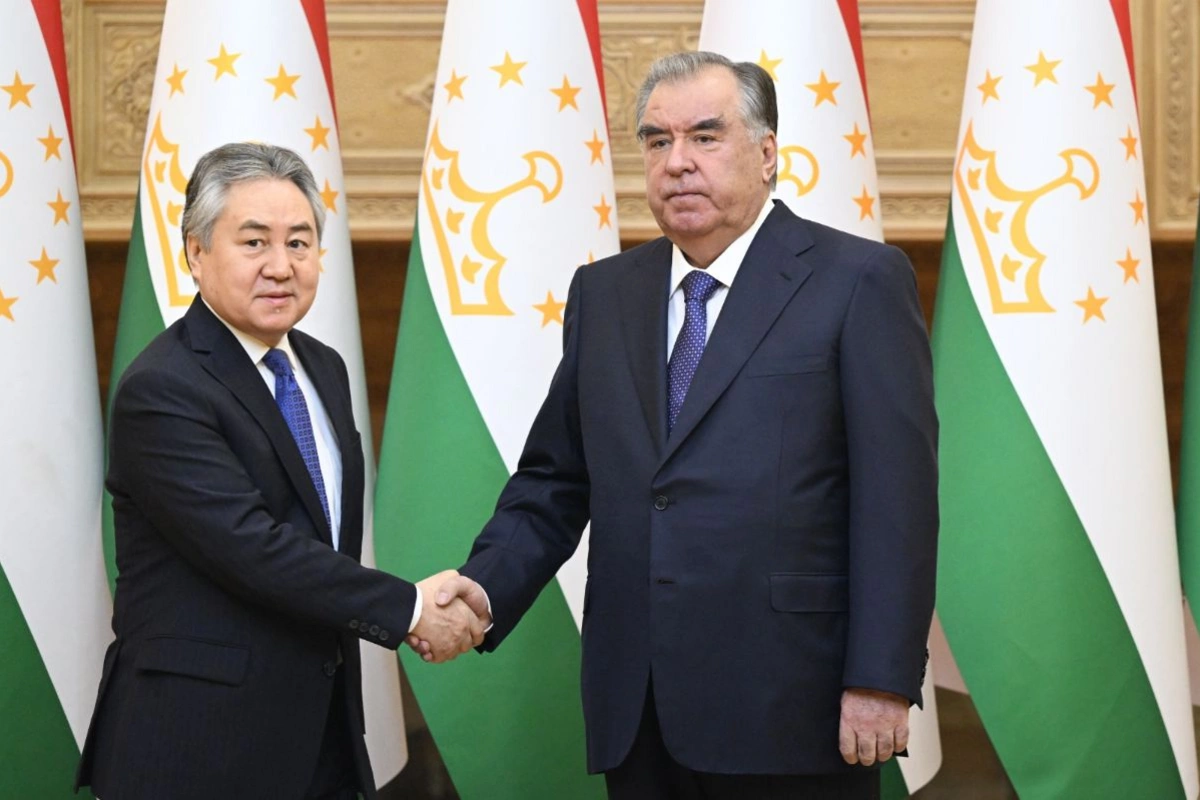
Topographers and legal experts from the two countries this week reached a resolution on another 3.71 kilometers of the border.
Image: mfa.gov.kg
(Eurasianet) Kyrgyzstan and Tajikistan have inched further forward to a final settlement to end decades of acrimonious disputes by agreeing on the delimitation of 90 percent of previously contested territory.
Tajik state news agency Khovar reported in an update on February 5 that topographers and legal experts from the two countries had reached a resolution on another 3.71 kilometers of their shared border.
That report was published on the same day that Tajik President Emomali Rahmon met in Dushanbe with visiting Kyrgyz Foreign Minister Jeenbek Kulubayev.
An official statement from Rahmon’s office quoted him advocating “political dialogue and the strengthening of an atmosphere of trust … between the two countries on the basis of a centuries-old bond of friendship and on the principles of good neighborliness.”
A press release issued by Kulubayev’s ministry described bilateral relations with Tajikistan as a priority in Kyrgyzstan’s foreign policy doctrine.
Amid all the decades of squabbling — the nadir came with two brief but bloody border confrontations in 2021 and 2022 — Kyrgyzstan and Tajikistan have enjoyed a sometimes symbiotically useful relationship.
There was a time when border crossings with Kyrgyzstan were the only ones that Tajiks could use to leave their own country overland. Uzbekistan under the late President Islam Karimov was low-level hostile to its neighbors, Afghanistan has been gripped by varying levels of turmoil and China kept people at a distance by means of bureaucracy.
Residents of Tajikistan’s northern region of Sughd and the highland Gorno-Badakhshan Autonomous Region in the east often made their way to the airport in the Kyrgyz city of Osh to travel further afield at affordable prices.
That ground to a halt a few years ago. A combination of official and independent media sources has assessed the number of people killed in the September 2022 conflict, including both armed combatants and civilians, at around 400.
When the borders closed following the fighting of 2021 and 2022, official trade turnover plummeted to nothing. Smugglers continued to ply their wares across the border, however.
The initiative to settle the border question once and for all picked up momentum in 2023.
This week, President Rahmon hailed what has been achieved thus far, noting that negotiators have managed over four months to trace out 196 kilometers of heretofore undefined boundaries. Almost 90 percent of the work has been done, he said.
The length of the border in its entirety is around 980 kilometers.
Kulubayev said that completion of border demarcation will finally allow the countries to intensify bilateral cooperation in all areas of mutual interest.
“The Kyrgyz side is committed to a speedy and mutually beneficial resolution of the issue of delimitation of the Kyrgyz-Tajik state border, taking into account the interests of each party,” Kulubayev said.
The border is only part of the broader conundrum. But both official sets of statements indicated that the other sticking points, those to do with the water resources of transboundary rivers, have been studied as well.
While on his working visit in Tajikistan, Kulubayev toured the construction site of the giant Roghun hydroelectric plant. Kyrgyzstan has aspirations to build its own mega-dams, although not quite on the same scale.
Khovar news agency reported in an article on Kulubayev’s tour that his delegation was particularly interested in inspecting tunnels, turbines and the transformer room.
Share on social media